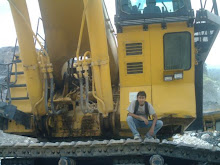Rotating astronauts for a lengthy period provided researcher Suzanne Nooij with better insight into how 'space sickness' develops, the nausea and disorientation experienced by many astronauts.
Gravity plays a major role in our spatial orientation. Changes in gravitational forces, such as the transition to weightlessness during a space voyage, influence our spatial orientation and require adaptation by many of the physiological processes in which our balance system plays a part. As long as this adaptation is incomplete, this can be coupled to motion sickness (nausea), visual illusions and disorientation.
This 'space sickness' or Space Adaptation Syndrome (SAS), is experienced by about half of all astronauts during the first few days of their space voyage. Wubbo Ockels, the first Dutchman in space in 1986, also suffered from these symptoms.
Nooij will receive her PhD from TU Delft on this subject on May 20. In his capacity as TU Delft professor, Ockels is PhD supervisor for Suzanne Nooij's research.
Rotation
Interestingly, SAS symptoms can even be experienced after lengthy exposure to high gravitational forces in a human centrifuge, as is used for instance for testing and training fighter pilots. To experience this, people have to spend longer than an hour in a centrifuge and be subjected to gravitational forces of three times higher than that on Earth. The rotation is in itself not unpleasant, but after leaving the centrifuge about half of the test subjects experience the same symptoms as caused by space sickness. It also turns out that astronauts who suffer from space sickness during space flights also experience these symptoms following lengthy rotation on Earth.
This means that these symptoms are not caused by weightlessness as such, but more generally by adaptation to a different gravitational force.
Suzanne Nooij has studied these effects closely using the human centrifuge at the Centre for Man and Aviation in Soesterberg. Her results confirm the theory that both types of nausea (space sickness and after rotation) are caused by the same mechanism and also provide better insight into why the symptoms arise.
Otoliths
Logically, Nooij focused her research on the organ of balance. This is located in the inner ear and comprises semi-circular canals, which are sensitive to rotation, and otoliths, which are sensitive to linear acceleration. It has previously been suggested that a difference between the functioning of the left and right otolith contributes to susceptibility to sickness among astronauts. If this is the case, this should also apply after lengthy rotation.
Nooij tested this otolith asymmetry hypothesis. The otolith and semi-circular canals functions on both sides were measured of fifteen test subjects known to be susceptible to space sickness. Those who suffered from space sickness following rotation proved to have high otolith asymmetry and more sensitive otolith and canal systems. These people could not be classified as sensitive or non-sensitive on the basis of this asymmetry alone, but could on the basis of a combination of various otolith and canal features.
This demonstrates that the entire organ of balance is involved in space sickness and that it probably entails complex interactions between the various parts of the organ of balance. Oleh:sciencedaily





0 komentar:
Posting Komentar